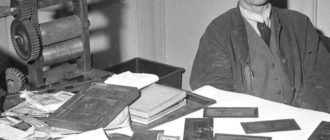
Faleristics (from the Latin falerae – “metal decoration”) is an auxiliary scientific historical discipline that studies awards, commemorative signs, badges, tokens and uniform accessories. The term faleristics is also called a type of collecting the above-listed distinctive badges.
Faleristics has much in common with another discipline – medalism, which covers only the field of study of medals and the history of medal art. For a long time, both of these sciences were part of numismatics and only recently separated from it.

The history of faleristics
Faleristics is a young discipline that has a very short history, although many of the subjects of Falerist’s research are hundreds of years old. Until the middle of the twentieth century, there was no separate term for this science. For the first time the name “faleristics” was invented by the Czech collector of awards and commemorative signs Oldřich Pilz in 1937, and 28 years later this term appeared in the USSR thanks to the Baku researcher Roman Stein.
The history of award marks – objects of research by the phalerists – dates back to the ancient era. In ancient Rome, the practice of awarding warriors who distinguished themselves in war with special insignia – medals was widespread. For their manufacture, alloys of non-ferrous and precious metals were used. These medals had significant artistic value, but were not used as money.

After the fall of the Roman Empire, medal art in Europe quickly fell into decay.
Only at the end of the 14th century, after a long hiatus, Italian craftsmen produced commemorative medals to commemorate the capture of Padua. From Italy, this practice spread throughout Europe, and in the 17th century the first award medals for military exploits appeared.
In the following centuries, almost all European states have developed their own reward systems. And in 1802, Napoleon came up with a new insignia – the Order of the Legion of Honor. Its design later became the basis for two other prestigious insignia: the Order of the British Empire and the Belgian Order of Leopold.

By the end of the 19th century, not only in the army, but also in the civilian sphere of activity, new objects of distinction appeared – objects of study of modern phalerists:
- official signs;
- souvenir badges;
- commemorative tokens;
- uniform accessories (cockades, headwear ribbons, emblems).

Insignia were and remain an important part of uniforms and at all times denoted a person’s belonging to a particular structure (service on the railway, in educational institutions, in the police, at the post office).
Insignia were and remain an important part of uniforms and at all times denoted a person’s belonging to a particular structure (service on the railway, in educational institutions, in the police, at the post office).
The history of awards and decorations continues to this day. Every year, new medals, orders and uniforms appear, which after some time will certainly become the subject of close study of subsequent generations of phalerist scientists.

Features of faleristics
Unlike medals, which considers medals, first of all, as a work of art, for faleristics, award signs are objects of particular historical value.
In the process of studying one or another award sign, Faleristis try to thoroughly define its unique history:
- the exact date and details of the development of the constituent documents of the order, medal or commemorative sign;
- circumstances, time and place of the person being awarded;
- detailed biographical information about the awarded; the history of ownership of the subject (provenance).

A careful study of an ancient award by a phalerist, followed by confirmation of its authenticity, can significantly increase the value (value) of such an item. The specialist carries out a detailed analysis according to various external and internal signs, up to the correspondence of the chemical composition of the investigated object to the reference sample.









